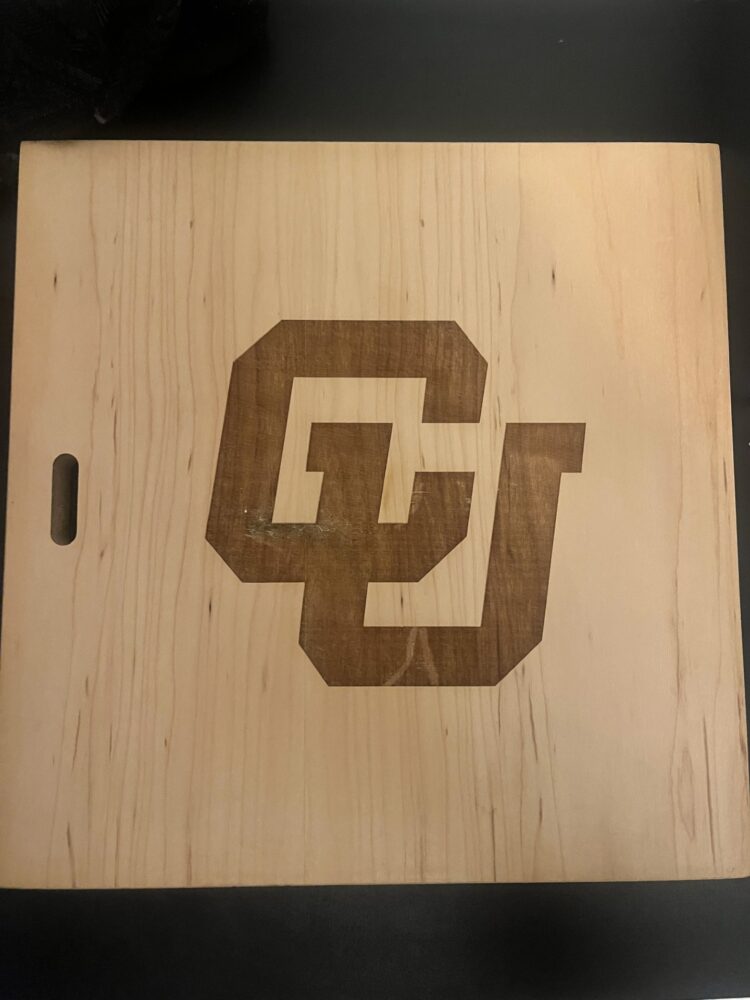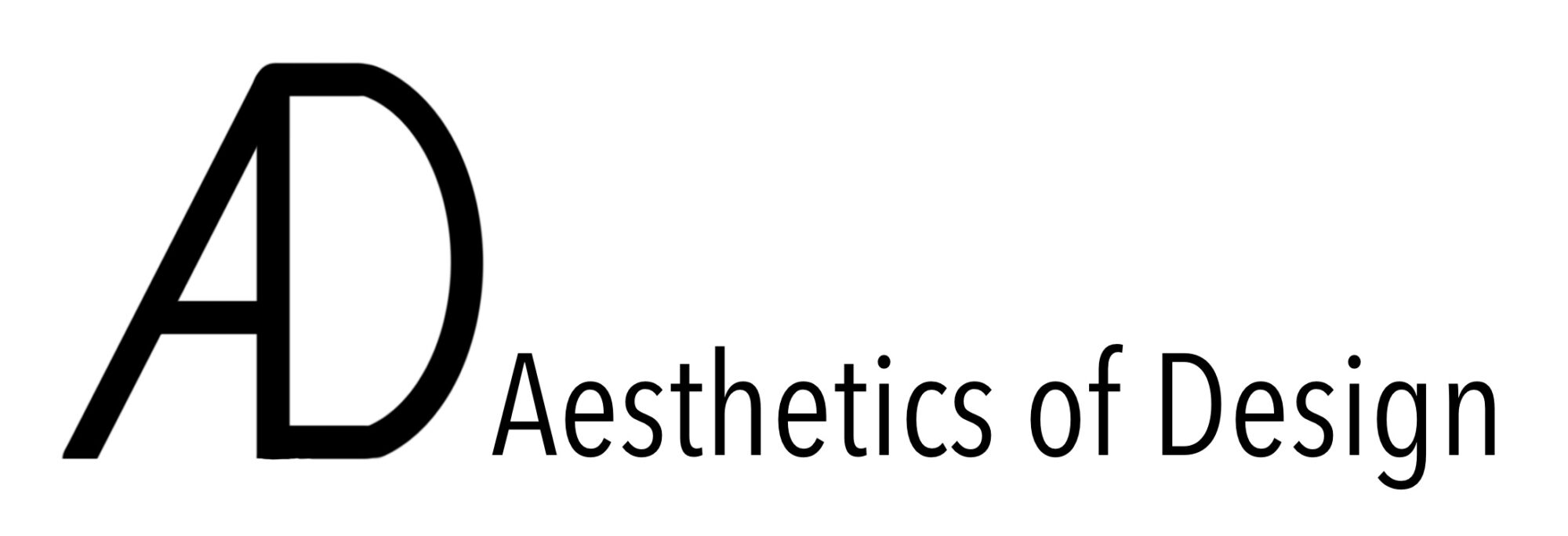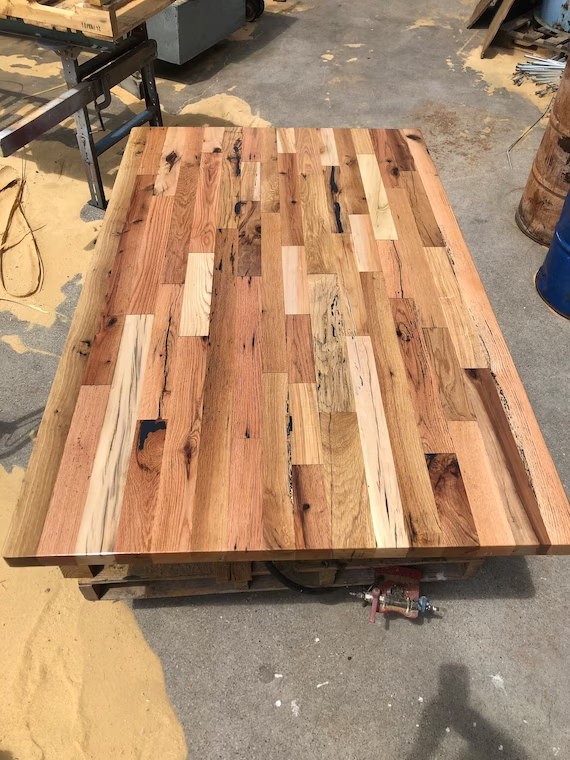Overview
For my upcycle project, I’ve decided to create a functional piece of kitchen ware, a cutting board out of a piece of scrap wood I found in a dumpster on campus. I thought this was the perfect opportunity to not only make something functional, but also to experiment with my woodworking skills and create a piece that feels personal and refined.
I’ve always been drawn to wood working because of the tactile nature of it—the way different materials come together to form something solid and lasting. I wanted to take this piece of scrap wood and refine it into a user-friendly and durable item. I aim to maintain the rustic aesthetic of the wood grain, while also giving the board a recycled look by keeping the already present features of the board. These include holes and slots that are present from the functionality of the board before it ended up in the dumpster.
 Main Design Considerations – Durability & Versatility
Main Design Considerations – Durability & Versatility
I wanted a board that could stand up to heavy use, but also one that could be used for more than just chopping. The final design will be reversible, with one side dedicated to food prep and the other side serving as a serving tray for cheese, bread, or even a nice presentation for fruits. The serving side has the CU logo on it, which I believe would also make the board stand out and make it a conversation piece in the kitchen. I will sand and oil the board to ensure that it is durable and can withstand the ware from food preparation.
Aesthetic Inspiration – Rustic, Natural, and Simple Beauty
For the aesthetic direction, I wanted something that feels rustic yet refined. I’ve always admired how natural wood has a way of telling its own story through its grain and texture. The concept is to let the wood’s natural features shine while maintaining a clean and simple design. I would like to experiment with stains in order to achieve this look and feeling to the best of my ability. I’m aiming to follow minimalist principles, where less is more, and aiming for a balanced composition that’s visually interesting without being overdone.
Implementing the Aesthetic
To achieve this, I’ll focus on the natural wood finish and using simple, clean lines. I plan to use a food-safe mineral oil finish to keep the wood’s natural look intact while protecting it from wear and moisture. While also filleting the edges for a smooth, ergonomic feel, and removing sharp edges from the piece. The imperfections that are present on the board will be filled with epoxy to create a smooth work surface on both sides of the board.
Final Thoughts
With this project, I’m hoping to not only create something beautiful and functional but also to further develop my woodworking skills. There’s something incredibly satisfying about taking leftover pieces of wood and turning them into something useful that can last for years. I’m excited to see how this turns out and I hope it’ll be a piece that people can enjoy using.


2 Comments. Leave new
This project seems really cool, useful, and smart. It makes me think about when I found a log, and wanted to make it into a cutting board myself, however the sap made it harder and totally just forgot about. When I planned on doing that, the thought of making it food-safe felt like a challenge, Have you thought about how you could actually use this in the kitchen? How will you make it food-safe? and would it also be dishwasher safe?
Your project sounds amazing, and I really like how your plan on preserving the imperfections of the wood. Since you plan on making the board functional and experimenting with stain, I interested in knowing what stains you plan on using and how they would interact with the epoxy and food-safe finish.